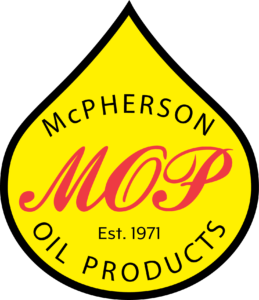Get the Most Out Of Oil Analysis
16 Dec 2019, Posted by in Oil Tips As you look at the oil analysis, remember that the most important area to consider is the relationship between result values and trends over time – not just the individual result from a single test. The following article from ExxonMobil looks at other ways to get the most out of their oil analysis, whether you work with your lubricant supplier or on your own:
As you look at the oil analysis, remember that the most important area to consider is the relationship between result values and trends over time – not just the individual result from a single test. The following article from ExxonMobil looks at other ways to get the most out of their oil analysis, whether you work with your lubricant supplier or on your own:
1.Good interpretation starts with good sample data
Have you heard the expression, “garbage in garbage out?” It refers to the quality of the product, and this philosophy also applies to the sample data taken during a reading.
All samples should include relevant data such as:
- Sample date
- The lubricant product tested
- The number of operating hours since the last sample
These three data points are particularly important. The sample date and hours data points relate to the oxidation readings, and the lubricant tested may determine what oil analysis tests are required.
2. Physical oil data trends
The first portion of an oil analysis result concerns the physical characteristics of the oil. The values of each result are important, but so is the relationship between these and other values in the result.
For example, consider oil viscosity.
If the results are low, you need to consider the following types of questions:
- Do we have the correct oil? Verify additive elements. Has there been a change in additive levels between samples, to suggest top up with the wrong product?
- Is there fuel, water, glycol present? Are wear metals showing? This is important because a customer will ask if the low viscosity has harmed his equipment. The answer is, only if wear metals are present.
- If glycol is there are sodium, potassium, and boron present in the oil?
Conversely, if the results are high, you need to consider the following:
- Do we have the correct oil? Verify additive elements. Has there been a change in additive levels between samples, to suggest top up with the wrong product?
- Is the oil showing a jump in the oxidation value? Are wear metals showing? Remember, if an application is generating wear metals, friction is increased, resulting in heat that will oxidize the oil. Look for a correlation between oil oxidation and wear metals results.
Other key physical characteristics to look for include:
- TAN: This value will increase if oxidation is on the rise. TAN measures the presence of acids that result from oxidation. There should be a corresponding decrease in TBN if measured.
- TBN: This value measures the ability of the oil to neutralize the acids formed by oil oxidation. If oxidation is increasing, TBN will decrease.
- Fuel dilution: If fuel is present, it will cut the oils’ viscosity. This is only harmful if the viscosity is below grade and causing the generation of wear metals.
- Glycol/water: A general test that determines the presence of either glycol or water can yield important insights. Confirm results by checking the viscosity and the presence of both contaminant metals (Na, K, and B) and wear metals.
- Soot: Soot generation is by engine type, fuel quality and efficiency of injectors. Check fuel dilution, viscosity and wear metals. Pistons and rings may be worn allowing exhaust gases into the oil. Commonly referred to as blow-by.
3. Wear element trends
With wear metals, trends and relationships are most important. But before we discuss that, let’s look at the wear metals and where they typically originate.
- Aluminum (Al) – Pistons, bearings, impellers
- Chromium (Cr) – Rings, liners and bearings
- Copper (Cu) – Pump casing, bearing, bushings, oil coolers
- Iron (Fe) – Cylinders, gears, rings, crankshafts, liners, bearings
- Nickel (Ni) – Valves
- Lead (Pb) – Plain and journal bearing overlay
- Tin (Sn) – Bearing materials
Metals do not just appear, there is a reason their presence increases. If you see wear metal trends growing over time, look for the following causes:
- A change in oil viscosity. High oil flow may generate wear metals.
- Contaminants such as water, glycol, fuel – they will typically generate wear metals.
- If bearing metals appear, look at the oxidation level. If it is increasing, this would mean that heat as friction is being generated as the wear occurs. The same can be said for an increase in iron and aluminum should a gear, or cylinder start to fail.
McPherson Oil is proud to partner with ExxonMobil to assist you in oil analysis and other industrial engineering needs. Together, we can analyze your lubrication needs and challenges and work with your team to develop workable and cost-effective solutions. Contact us today to learn more.
About: McPherson Oil has provided the southeast with quality products and services since 1971. As a proud distributor of ExxonMobil products, we offer these services through our belief in TPM – Total Petroleum Management. Through our TPM program, McPherson brings a valued-added difference to its customers by meeting all of their petroleum needs. Our commitment to our customers is reflected in our company vision and mission statements. McPherson proudly services Alabama, Arkansas, North and Central Georgia, Mississippi coast, Florida panhandle, Greater Chattanooga Area, the Greater New Orleans Area and Louisiana and Mississippi Gulf Coast.
Source: “Productivity Tips: How to Get the Most Out of Used Oil Analysis – Part 1” Rick Russo with ExxonMobil
